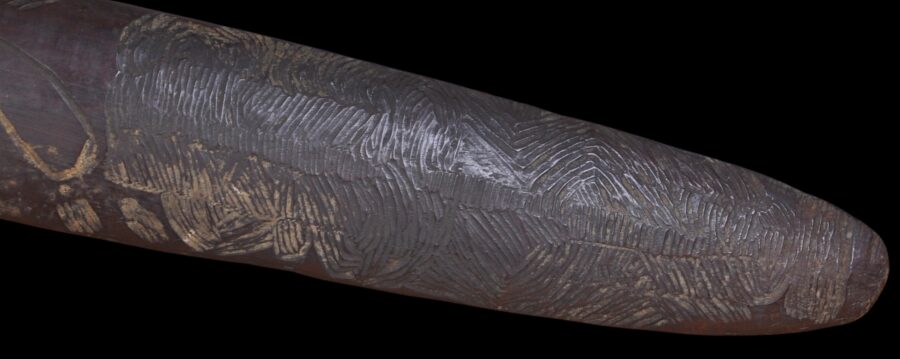This boomerang has a dark, glossy patina, and intricate and complex carving on the convex side which almost certainly denote the ‘totem’ of the original owner. Most probably it was intended as a fighting weapon.
Several of the motifs on the boomerang are decipherable and can be interpreted.
The arrow-type motifs usually are intended to represent emu tracks (emus have three large toes). The roundel of concentric circles represents a campsite or a waterhole. Two simple cross motifs possibly represent budgerigars. The groups of short parallel lines possibly represent sandhills. The large motifs on the left of the boomerang could represent a dugong or a large fish such as a barramundi (barramundi, meaning ‘large-scaled river fish’ is a loan word from the Aboriginal people of the Rockhampton area in Queensland, near to where this boomerang is from.
The other side is plain other than a band of carved lines at each end.
The boomerang has a dark patina, as mentioned, is of hardwood, and without cracks or losses. Most probably it has been carved with sharpened flint chisels.
The boomerang was found in the UK and most probably has been in the UK since colonial times.
References
McCarthy, F.D., Australia’s Aborigines: Their Life and Culture, Colorgravure, 1957.
Petty, D., The Art of Eastern Australia: Fine Aboriginal Weapons & Artefacts [sic], Graphic Solutions, 2009.








